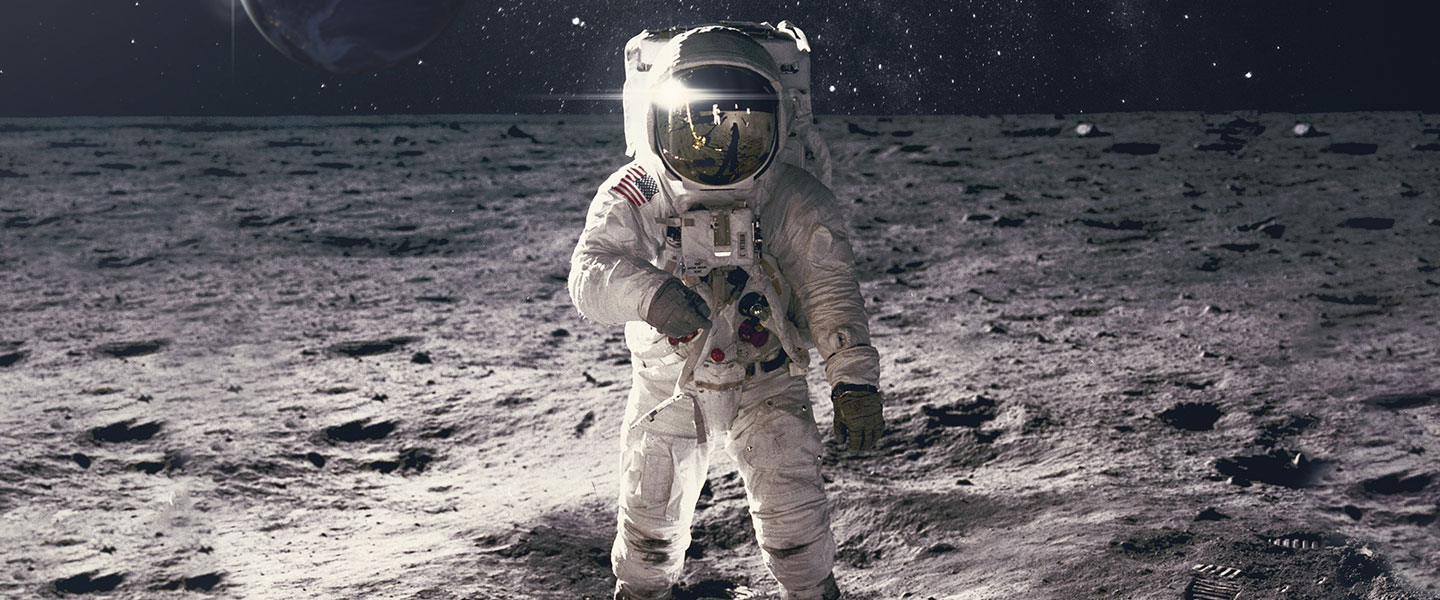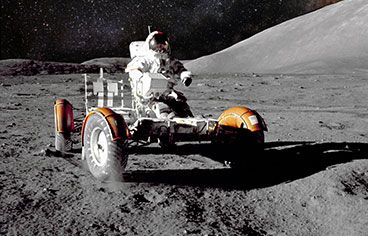
What the Moon Landing Can Teach Us About Digital Transformation
The Apollo space program was one of the greatest accomplishments in human history—putting a man on the moon for the first time in history.
While your digital transformation efforts may not be quite as ambitious as the Apollo program, they may still require a level of faith and innovation beyond what you might have needed before. If you can’t inspire people to believe or drive the level of innovation and commitment necessary, your plans may fail.
But you can reduce that risk by learning from what worked in the Apollo program.
Here are ten lessons from the moon landing to make your enterprise transformation more successful.

1. SHOOT FOR SOMETHING BOLD
Prior to the moon landing, the word “lunatic” was used to describe people crazy enough to believe that man could go to the moon (the prefix “luna” being the Latin word for moon).
Who’s crazy now?
In fact, a lot of the things that we do today would have seemed crazy not too long ago.
For example, you can attend a video conference from your watch, stay connected to everyone from anywhere in the world, make payments from electronic devices in your pockets, and call a taxi with the press of a button.
Bold solutions come from bold ideas that some people might consider insane.
There’s an old saying attributed to Schopenhauer: "All truth passes through three stages: First, it is ridiculed. Second, it is violently opposed. Third, it is accepted as self-evident.” Be willing to be on the earlier end of this process.

2. COMMUNICATE A CLEAR VISION
In 1961, President Kennedy stood in front of the people of the United States and declared very specifically that the United States was going to “send an American to the moon before the end of the decade and return them safely to Earth.”
Kennedy’s vision was effective because he gave a clear objective and a time frame.
It might seem daunting to be that specific, especially if you are not entirely sure how long an initiative will take or if it will even be possible, but laying out a precise outcome that people can envision will mobilize them to work hard to figure out how to make it a reality. At least that’s what happened with Apollo.
3. TURN COMPETITION INTO MOTIVATION
One of the things that made Kennedy’s proclamation so motivating was the timing. Three months before his speech, the United States’ main global rival, The Soviet Union, successfully put the first man in space, putting them in the lead in the global “space race.”
Be it sports, politics, or the business world, it’s easier to mobilize people when they feel that there’s competition.
Rivals help raise your standards because you focus less on what’s possible and more on winning.
4. CONTINUE TO ITERATE
The first craft that landed on the moon was actually Apollo Eleven, and it was the process of iteration going all the way back to Apollo One that allowed them to successfully accomplish this goal.
The first six Apollo missions were unmanned, the seventh orbited the Earth, the eighth had an astronaut orbit the moon, the ninth again orbited the Earth, and the tenth again orbited the moon and did everything but land on it.
In the digital world, the Apollo One mission would be called the minimum viable product.
The first version of the product you bring to the market might not fulfill your full vision, but you have to be willing to iterate until you succeed.

5. DIVIDE AND CONQUER
One of the biggest challenges in the Apollo program was how overwhelmingly large the undertaking was.
They assigned different teams to figure out each phase of the process: how the spacecraft would take off, maneuver through space, land on the moon, leave the moon, and return to earth.
There were different companies assigned to building the rockets and other components of the spacecraft.
Large problems can seem overwhelming, but if you break them down into smaller pieces and have those parts handled by different teams, it becomes more manageable.

6. TEST WITH YOUR USERS
Another problem that needed to be solved for the Apollo program was designing spacesuits that could handle the trip to and from the moon and protect the astronauts who were in them while on its surface.
NASA hired a number of companies to build different prototypes representing different approaches to constructing the spacesuits. These prototypes were then tested with astronauts and simulated environments.
Some worked better than others; eventually, they determined that they needed several different kinds of space suits for different phases of the mission.
User testing is critical for your product so you can unearth problems, find out what works, and iron things out before the final version.
It’s always easier to fix a prototype than release a full product that has a ton of problems, and of course, the last thing the Apollo program wanted was problems in space.

7. UNDERSTAND THE ENVIRONMENT YOUR PRODUCT WILL BE USED IN
What works on earth won’t necessarily work the same way in space.
The same can be said for your product.
You need to consider where your app or any other initiative will be used most before you create the experience that supports it.
In the Lunar Rover’s case, the vehicle used to drive across the surface of the moon needed to be light enough for take off, but heavy enough to stay on the ground, with wheels that provided enough traction to move on the dusty surface of the moon.
Will your product need to be readable in direct sunlight? Should it be able to function offline? Should it support hands-free use?
Carefully consider all of these environment use factors while making your product to increase its chances of success.

8. BE WILLING TO BUILD IT YOURSELF
A lot of the items used in the Apollo program were not commercially available and had to be custom made.
From the tires used on the Lunar Rover to the special computers, almost everything was built exclusively for the spacecraft.
Similarly, when you’re innovating, don’t limit yourself only to what’s available in the market.
Be resourceful enough to identify what you need to create and what’s already available that can be incorporated into your product.

9. TRAIN YOUR PEOPLE
The success of the Apollo program was not only about the technology that was created; it was also about the people who were going to use it.
The astronauts and the crews on the ground needed to understand exactly what they were supposed to do and to be well practiced in the skills they would need to apply in order to guarantee success for the mission.
The same can be said for your company when you transform.
What does your call center need to do differently when you update your app? Are changes needed in the billing department? Accounting? Does legal need training in cyberlaw?
People will always be a key part of your business, regardless of what kind of technology you put in place, so make sure they’re retrained thoroughly for your transformation.

10. ASSURE QUALITY
The parachutes used by the spacecraft when it returned to Earth went through multiple levels of quality control, from the individual stitches on the fabric to the way the parachutes were folded and packed. Everything had to be perfect in order to ensure they operated correctly. One bad stitch could rip apart the parachute on descent and kill the astronaut.
Your transformation might not have the same level of risk tolerance as the Apollo program, but today’s digital customers have extremely high expectations.
You need to make sure they have an outstanding digital experience with your product, because if anything goes wrong, you risk losing a customer. Ensure you have rigorous quality standards that align with your vision of the customer journey and have processes in place to be sure they are being upheld.
The good news is that unlike the Apollo program where each mission was literally life or death, the digital world makes it easy to test different approaches with the market. If they fail, you can simply adjust and try again the next day. Nevertheless, these lessons that made the Apollo program such a success for humanity still hold true for ambitious transformation projects today.